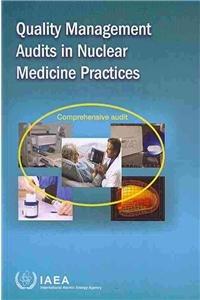Question
Task 2 Materiality assessment requires an auditor to make judgements about the size of misstatements that would be considered material to the users of the
Task 2
Materiality assessment requires an auditor to make judgements about the size of misstatements that would be considered material to the users of the financial statements.
The auditor will design procedures in order to identify and correct errors or irregularities that would have a material effect on the financial report and affect the decision making of the users of the financial report. Materiality is used in determining audit procedures, sample selections, and evaluating differences from client records to audit results. It is the maximum amount of misstatement, individually or in aggregate, that can be accepted in the financial report.
In selecting the base figure to be used to calculate materiality, an auditor should consider the key drivers of the business. They should ask, What are the end users (i.e. shareholders, banks etc.) of the accounts going to be looking at? For example, will shareholders be interested in profit figures that can be used to pay dividends and increase share price?
S & H Partners audit methodology dictates that one planning materiality (PM) amount is to be used for the financial report as a whole (that is, rather than separate PMs for the income statement and the balance sheet). The basis selected is the one determined to be the key driver of the business.
S & H Partners use the following percentages as starting points for the various bases:
| Base | Threshold (%) |
| Profit before tax | 5.0 10.0% |
| Operating Revenue/Sales | 0.5 1.0% |
| Total assets | 0.5 1.0% |
| Equity | 1.0 2.0% |
Once the basis is chosen for PM, the percentage is chosen from the range based on qualitative client factors, including:
- the nature of the clients business and industry (for example, rapidly changing, either through growth or downsizing, or an unstable environment)
- if the client is a listed entity (or subsidiary of) subject to regulations
- the knowledge of or high risk of fraud.
Clearly Trivial Threshold (CTT) is the designated amount below which misstatements would be clearly trivial and would not need to be accumulated/recorded as an audit misstatement because the auditor expects that the accumulation of such amounts would not have a material effect on the financial statements. However, any misstatement above the CTT would be regarded as material and would need to be accumulated/recorded as an audit misstatement.
Required
Using information from the financial statements for Penfolds Mining Group Ltd, you are to use professional judgement to complete the following tasks:
a. From the bases for planning materiality stated above, identify what you think is the most appropriate base and state your reasons why you have chosen this base.
b. Given your choice of base, from the threshold percentages stated above, indicate your choice of threshold percentage and state your reasons why you have chosen this percentage (NOTE: For each of the bases a range of percentages is given. You must choose a percentage at the high end, low end or middle of this range and justify your choice of percentage).
c. Calculate the amount of Planning Materiality given your decisions in a and b above.
d. With respect to Clearly Trivial Threshold, select the percentage range for your CTT calculation (1% to 5% of PM) and state your reasons why you have chosen this percentage.
e. Calculate the amount of CTT
Step by Step Solution
There are 3 Steps involved in it
Step: 1

Get Instant Access to Expert-Tailored Solutions
See step-by-step solutions with expert insights and AI powered tools for academic success
Step: 2

Step: 3

Ace Your Homework with AI
Get the answers you need in no time with our AI-driven, step-by-step assistance
Get Started


